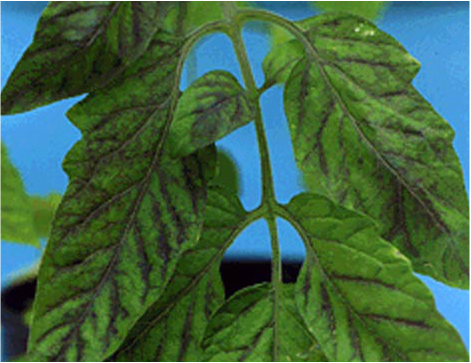- Home
- Garden Thyme Blog
- Themes
- Flowers
-
Veggies
-
Warm Season Vegetables
>
- About Beans >
- About Corn >
- Cucumbers >
- Melons
- Peppers >
- Squash >
-
Tomatoes
>
- How to Harden Off Tomato Plants
- How (and when) to Prune Tomatoes
- Magnesium Sulfate (Epsom Salt) for Tomatoes
- Blossom End Rot in Tomatoes
- Growing Cherry Tomatoes in Hanging Baskets
- 4 Best Tomatoes for Short Seasons - Early Tomatoes
- 5 Early Maturing Tomatoes for Short Season Gardening
- How to Ripen Green Tomatoes
- How to Make Sun-Dried Tomatoes at Home
- How to Grow a Pomato Plant
-
Cool Season Vegetables
>
-
Warm Season Vegetables
>
- Herbs
- Gardening Basics
- Garden Pests
- Birds
- Fiddleheads and Fairies
- About Us
- Contact Us
- How to Marinate Roasted Vegetables
|
A phosphorus deficiency in your plants will cause stunted growth and prevent them from producing fruit as expected, yet is often overlooked or misdiagnosed as a nitrogen deficiency. Although it is a bit difficult to determine for the untrained eye, with a little effort you can learn to recognize signs that your plants are suffering from a phosphorus deficiency. Correcting the problem early will resolve the issue and your plants will thrive.
1. Small thin stalks. Plants that do not receive enough phosphorus develop weak, thin stalks that appear spindly. Healthy plants need strong stems to support the weight of the developing fruit. Thin stalks are not able to support the fruit and break easily in the wind. If your plants fail to develop stocky stems, phosphorus may be the culprit. 2. Stunted growth. Plants suffering from a phosphorus deficiency may be stunted and short in stature. In initial stages, they may appear healthy and look like much younger plants. If your plants are smaller than expected or smaller than other plants of the same age, they may need additional phosphorus. 3. Purple veins or a purple hue to the undersides of leaves. Check both the top and bottom of the leaf for purple veins. This is evident on new growth as well as older leaves. In severe cases, the entire leaf may take on a purple hue. 4. Older leaves may appear bluish-green. Instead of the characteristic rich green of new growth you may notice leaves taking on a bluish tint. Unless the plant foliage is typically blue-green (like in broccoli and cauliflower), blue-green leaves typically signal a lack of phosphorus. 5. Reduced blooms and/or onset of fruit. Phosphorus promotes blooming and fruit production. A deficiency may cause the plant to stop producing blooms or the blooms and fruits to be small and lack their usual color. For good fruit production, plants require phosphorus. Tomato plants, like one above are susceptible to a phosphorus deficiency. Adding plastic mulch to increase soil temperatures may solve the problem, if the deficiency is due to cool soil. To increase the level of phosphorus in the soil, apply high phosphorus fertilizer (usually labeled as fertilizer for blooming plants). Miracle-Gro for tomatoes is high in phosphorus.
0 Comments
Leave a Reply. |
For more nature photography, check out my photography site.
|
Copyright © 2014 Nannette Richford
- Home
- Garden Thyme Blog
- Themes
- Flowers
-
Veggies
-
Warm Season Vegetables
>
- About Beans >
- About Corn >
- Cucumbers >
- Melons
- Peppers >
- Squash >
-
Tomatoes
>
- How to Harden Off Tomato Plants
- How (and when) to Prune Tomatoes
- Magnesium Sulfate (Epsom Salt) for Tomatoes
- Blossom End Rot in Tomatoes
- Growing Cherry Tomatoes in Hanging Baskets
- 4 Best Tomatoes for Short Seasons - Early Tomatoes
- 5 Early Maturing Tomatoes for Short Season Gardening
- How to Ripen Green Tomatoes
- How to Make Sun-Dried Tomatoes at Home
- How to Grow a Pomato Plant
-
Cool Season Vegetables
>
-
Warm Season Vegetables
>
- Herbs
- Gardening Basics
- Garden Pests
- Birds
- Fiddleheads and Fairies
- About Us
- Contact Us
- How to Marinate Roasted Vegetables
